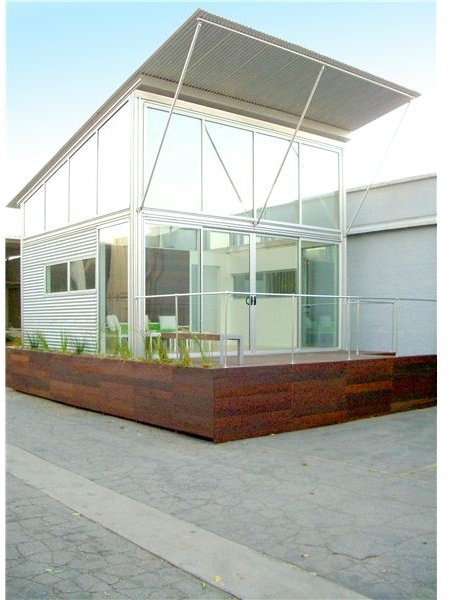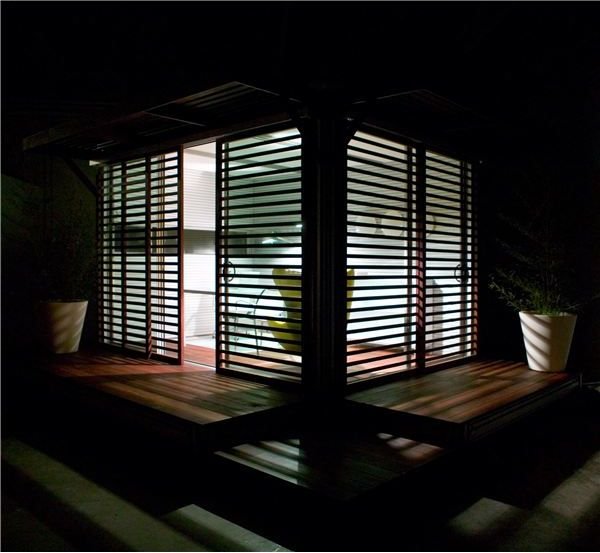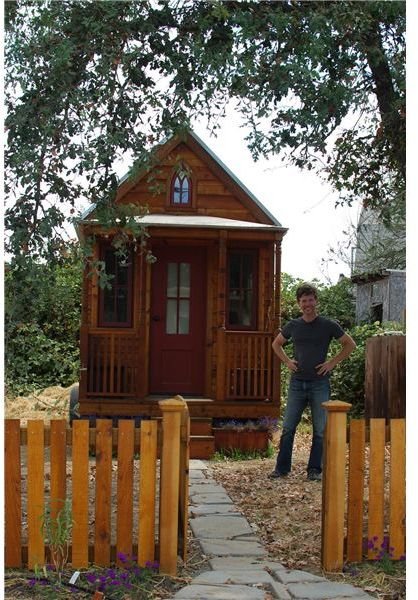The Small House Movement
The economic crunch and its stranglehold on the American middle class has created a burgeoning interest in simplified living. One of the more extreme aspects of this concept is the small house movement which has seen families relocating to smaller and smaller homes to save money. Does this really work? Is it feasible for a family to live well together in a 500 sq. ft. space? Where do you put all of your stuff? Find out as we investigate the small home movement around the world.
Small House Defined
While there is no set size for a “small house” a generally accepted gauge is about 450 sq.ft. plus 100 sq. ft. per family member. This would put a family of four in a home around 850 sq. ft. While this may seem like a tight fit there are plenty of families around the country who are already living and loving it. The small house movement isn’t about size though; it’s about living simply and advocating environmental responsibility.
OK, I’m interested in living in a small home but there’s just one problem, where do I put all of my stuff? This is the number one question that comes to mind when people think of downsizing their living environment. The truth is that most of the “stuff” we accumulate simply takes up space in our homes and is rarely used. If you walk through your home and take all of the stuff you haven’t used in the past year and place it in the front yard chances are there will be more of your stuff outside than inside. This is all stuff you can do without.
The other major question is centered on privacy. In a small space it is hard to get away from someone and spend time on your own. There are several solutions to this one. First, you are not required to stay inside your home. If you need some privacy go outside and take a walk, work in the garden or sit on the front porch. Another option is to open up the lines of communication; people who can live together in a small space are generally more intimate and share their experiences more readily. Another option is to shut the door to your room. Just because a home is small doesn’t mean it doesn’t have private spaces. Bedrooms can still be solitary sanctuaries in most cases.
What are the Advantages of Small Home Living?
What can I expect to get out of a micro home? For starters you’ll see an immediate reduction in utility bills. A smaller space is much easier to heat and cool than a larger one. You’ll also reduce your impulse spending because you’ll be asking yourself “where am I going to put that?” before you make a purchase. Your home will have a smaller price tag (most home prices are based on square footage) and therefore have a lower mortgage payment (if there even is one) and lower property tax. Those are the monetary pluses you can expect from reducing your living space, but there is far more than that.
Because you will have more money you’re much less likely to suffer from debt stress. Stress is a major health problem in the U.S. and it’s only getting worse as more people are suffering during severe downturns in the economy.
So you’ll have more money and better health. What other advantages might a small home have for you?
The smaller home footprint means there will be less of an area to clean. That means no more spending an entire day vacuuming and washing windows. Home maintenance will also be easier; less siding to paint and nowhere near as much gutter to clear out. You’ll ultimately have more time on your hands to do what you want.
So, you’ll have more money, more free time and better health. These seem like pretty strong arguments for living more simply in a smaller home.
Examples of Small Houses
OK, you make a good point but are there people actually living this or is it just some theoretical fantasy? That’s a great question. There are literally hundreds of blogs and websites dedicated to small house living, most of which are maintained by people who actually walk the walk. Designers in Japan have been dealing with small lots and difficult building spaces since the 1970s. Some of the most famous Japanese architects are working in the field of tiny homes. The “minimum home” designed by Makoto Masuzawa in 1952 inspired an entire new generation when his original design was duplicated by Makoto Koizumi of Commdesign for an interior display in 1999. This display recreated the entire home inside a gallery space for a design conference. Other Japanese micro homes include the Lucky Drops home by Yashuhiro Yamashita and Takaharu Tezuka’s House to Catch the Sky.
One firm that is taking the sustainable small home to its most minimal is the kitHaus company. They offer several different “pods” that can be assembled on site by their contractors or you can put it together yourself. The units are small enough that most areas won’t require a permit for their placement (unless you hook two or more together).
While Frank Lloyd Wright didn’t champion small homes, several of his designs have acted as inspiration to the current builders in the small home world. This “back to nature” approach and green philosophy is one of the cornerstones of the small house movement.
kitHaus




Challenges Facing Small Home Owners
While living simply is a noble pursuit it isn’t always as simple as it seems. There are numerous challenges when it comes to living in a small space. First, there are several communities (home associations, city and county government, etc.) that have minimum size requirements for home builds. This means that even if you wanted to build a micro home you couldn’t because it wouldn’t be up to statutory code. Why is this? It comes back to the money issue. Smaller homes can be constructed by individuals rather easily while larger buildings require the expertise of professional builders. Besides keeping the builders monopoly it also works to the builder’s advantage because pricing is based on the square footage of the home. This makes it advantageous to build larger homes. By requiring certain size requirements in a community the government is effectively eliminating the chance for a homeowner to build a home without the help of contractors.
There is also a lot of opposition from home owners near the proposed site of a micro home build. They often fear that the lower price of the small house will affect the value of their home (which has already taken quite a hit in most places due to the bubble that popped in 2008). Is this fear justified? Unfortunately it is. Home values are based on the average value of comparable properties in the area. By building a smaller and cheaper home a small house owner may bring the market value of neighboring properties down. When this type of monetary effect comes into play, potential small home sites become less attractive due to neighborhood dissonance.
The third issue facing a potential small house owner is finding the right balance between utility and luxury. While the interior space is small there is no need for it to be sparse. A frugal decorator can find several pieces of multifunctional furniture to populate the rooms of the home. And just because the home is small doesn’t mean you can’t erect a second building on the property for storage of larger items like holiday decorations, lawn equipment and other necessities. A small home owner will have saved plenty of cash by cutting utility, tax and mortgage expenses so an outbuilding should fit nicely into the yearly budget.
References
-
MicroHome Living http://microhomeliving.com/
-
Resources for Life: The Small House Society http://www.resourcesforlife.com/small-house-society
-
kitHSUD http://kithaus.com/
-
kitHaus Images courtesy of the kitHaus Press Kit.
-
Tumbleweed House Image courtesy of nicolas.boullosa on FlickR under Creative Commons License 2.0. http://www.flickr.com/photos/faircompanies/4052635932/sizes/o/in/photostream/
